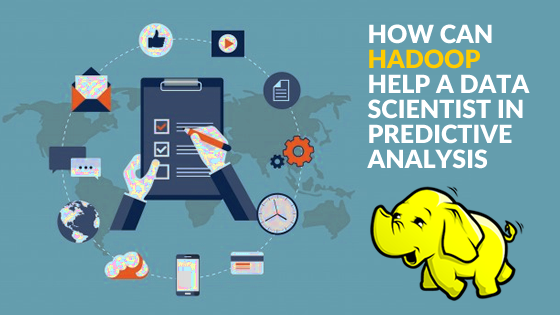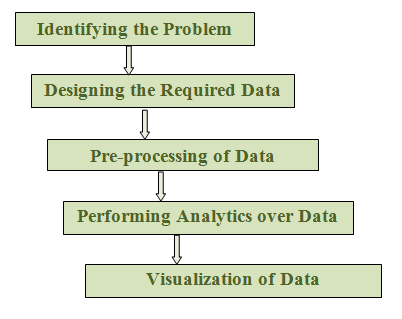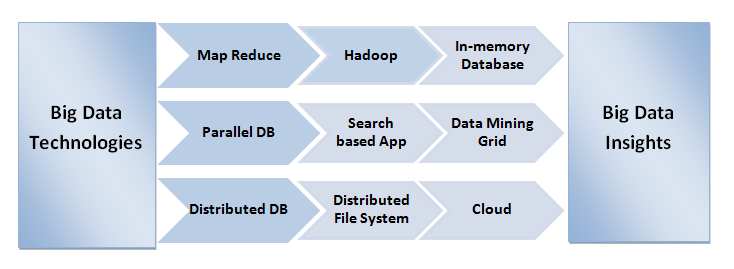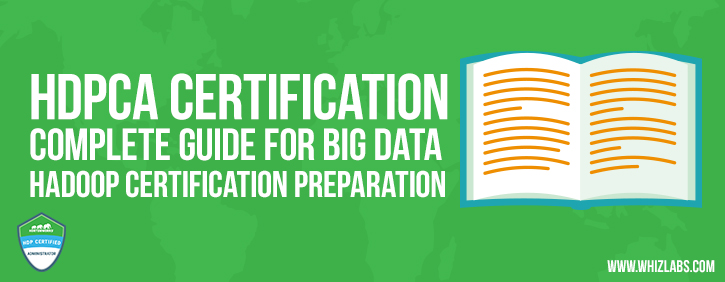Big Data Analytics has obtained a new height with Hadoop. This open source big data processing platform helps in capturing, storing, and processing the massive volumes of unstructured data. The real-time data has gained enormous credibility with its revolutionary contribution in business. Hadoop predictive analytics is today’s real-time recommendation to reduce cost and market analysis for better performance.
Want to get one level up in your Hadoop career? Here is the list of Best Hadoop Certifications in 2018. Choose one and get certified now!
Hadoop predictive analytics is the advanced analytics method that provides better insights on the customer, potential risks, product portfolio in the market. Overall it is a competitive advantage for an organization in:
- Detecting fraud
- Optimizing marketing campaigns
- Improving operations
- Reducing risk
Using Hadoop, data scientists can efficiently perform predictive analysis. Almost all business verticals like Finance, Banks, Retail, Energy, Health, Manufacturing, and Government use predictive analytics.
However, to know how does it happen and what is the Hadoop’s exact role in it, let’s move to the next section of the blog.
What is Predictive Analytics Model?
In predictive analysis model, data scientists use input data and its significance through different statistical method to define an outcome or probability of the output data. The output data is commonly known as the target model.
There are two types of models followed by predictive analytics:
1. Classification Model
The classification model for predictive analysis predicts class membership. For example, through this model, a data scientist can predict whether a member of a group will leave or retain. It is a logical representation and usually represents 0 or 1.
2. Regression Model
The regression model for predictive analysis predicts number through analysis. For example, how much revenue a business can obtain is easily analyzed using this model.
Popular predictive modeling techniques are:
- Decision trees
- Regression (logistic and linear)
- Neural networks
- Bayesian analysis
- Ensemble models
- Gradient boosting
- Partial least squares
- Incremental response (also called net lift or uplift models)
- K-nearest neighbor (knn)
- Principal component analysis
- Support vector machine
- Memory-based reasoning
- Time series data mining
Whatever models an organization follows two important factors should be taken are:
- A predictive analysis involves different in-house and external vendors to collaborate in the process. Hence, the intellectual property of the organization must remain safe.
- Predictive analytics model used by the company must be up to date and keep pace with the ongoing changes in the market. Otherwise, the competitive advantage obtained by the model may become obsolete over the period of time.
Preparing for Hadoop interview? Here are the Top 50 Hadoop Interview Questions and Answers that will help you crack the interview!
Different Stages of Predictive Analytics Life Cycle
The core of predictive analytics is following its life cycle. The predictive model goes through various stages of its lifecycle – starting from the problem statement that is its birth up to its replacement by another model. Followings are the stages of predictive analytics:
 1. Identifying the Problem
1. Identifying the Problem
- This is the very first step to have an understanding of the problem.
- Need a dry run on the predictive analytics steps to solve the problem.
- To set the goal of the analysis, i.e. what would be the target model based on the input data.
2. Designing the Required Data
- To consider the useful predictions based on input data.
- To define decision model using the insights obtained by analysis
- To follow necessary actions based on the analysis.
3. Pre-processing of Data
It is the most time-consuming phase of the entire cycle.
- Analysis needs data from various sources like sensors, transactional system, logs, etc.
- The collected data may be unformatted which needs data management which means cleanse up and preparing them for analysis.
- Data preparation involves analysis of business problems too.
4. Performing Analytics Over Data
- This is the beginning stage of predictive analytics model.
- Either data analytics tools or manual effort is involved in this step.
- Deployment of the model which means the model starts working on prepared data.
- Provide the outcome which is results or the predictive model over data.
5. Visualization of Data
- The output result is visualized through the tool to provide a better understanding of the data.
Global Hadoop Market is growing at a rapid rate. According to the trend analysis report, Global Hadoop Market is expected to reach $84.6 billion by 2021.
Hadoop and Big Data Predictive Analytics
Managing the data analytics life cycle of a predictive model has several advantages when analyzed through Hadoop.
Data Sourcing
Hadoop distributed file system (HDFS) works as the data source for predictive analysis in a distributed cluster data management system.
Open Source Analytics
Predictive modeling algorithms in an open source platform like Hadoop ecosystem have its own pros. A statistical programming language like R works well with its open source analytic algorithms in Hadoop environment. Besides, Apache Spark and Mahout also have inbuilt predictive analysis algorithms, and they can also fast analyze large sets of data.
Data Exploration
Hadoop, by default, is ideally suited for large sets of batch data processing. With the initiatives from HortonWorks and Cloudera, Hadoop data is now accessible through Hive and Impala in interactive mode.
Secure Analytics
Hadoop is an open-source platform. Hence security like authorization and authentication may be a concerning parameter for Hadoop. Predictive analytics involve different teams as discussed above.
Hence, as a predictive analytics tool, it must cover up the gap. With the initiatives from Cloudera and Hortonworks, Hadoop has already achieved those solutions.
Better Workflow Management
Hadoop ecosystem comes with workflow management projects like Oozie workflow scheduler. Though not specifically tailored to a predictive analytics life cycle, this tool works well for data scientists.
Hadoop is now not only for Data Scientists but for developers too. Here are the 5 reasons why Java Developers should learn Hadoop.
Hadoop Challenges for Big Data Analytics
As we have highlighted the important considerable factors for predictive analytics, the same applies to Hadoop in few core areas. These areas must be considered to make Hadoop a viable predictive analytics tool for data science.
Scaling Issue
With the growing set of large data, Hadoop may not perform well during predictive analysis. So, when it is a question of choosing the right algorithms with massive data volumes scalability might be a concern.
Similarly, the two tools in Hadoop ecosystem Apache Spark and Mahout have a limited set of predictive analytic algorithms. Hence, this is another area to improve to achieve the decent choice of algorithms.
Security Concerns
Though Hortonworks and Cloudera have helped to improve security performance of Hadoop, however, their core focus is on data management and not data modeling. Hence, data modeling part needs improvement considering the production data model.
Data Exploration with Visualization
Sometimes predictive analytics functionalities go beyond its life cycle which involves data exploration through interactive visualizations on the massive amount of data.
Better Workflow
This area needs more improvement in Hadoop. To organize different lifecycle stages of predictive analytics or to implement business rules, Hadoop workflow management needs enhancement with more functionality.
Conclusion
While predictive analytics identifies meaningful patterns from big data, knowing Hadoop significantly helps for better analysis. Though knowing Hadoop is not mandatory for a data scientist, but a comprehensive Hadoop knowledge works as an added advantage.
Whizlabs offers the Hadoop courses like Spark developer certification guide and Hadoop administration exam guide for Hortonworks and Cloudera. For a data scientist who wants to achieve a comprehensive knowledge of Hadoop ecosystem and insights, these courses will help a lot.
Wish you the best in your Big Data Hadoop career!
Have any query/suggestion? Feel free to write us here or just put a comment below, we will be happy to answer!
- Top 45 Fresher Java Interview Questions - March 9, 2023
- 25 Free Practice Questions – GCP Certified Professional Cloud Architect - December 3, 2021
- 30 Free Questions – Google Cloud Certified Digital Leader Certification Exam - November 24, 2021
- 4 Types of Google Cloud Support Options for You - November 23, 2021
- APACHE STORM (2.2.0) – A Complete Guide - November 22, 2021
- Data Mining Vs Big Data – Find out the Best Differences - November 18, 2021
- Understanding MapReduce in Hadoop – Know how to get started - November 15, 2021
- What is Data Visualization? - October 22, 2021





Thanks for sharing this information